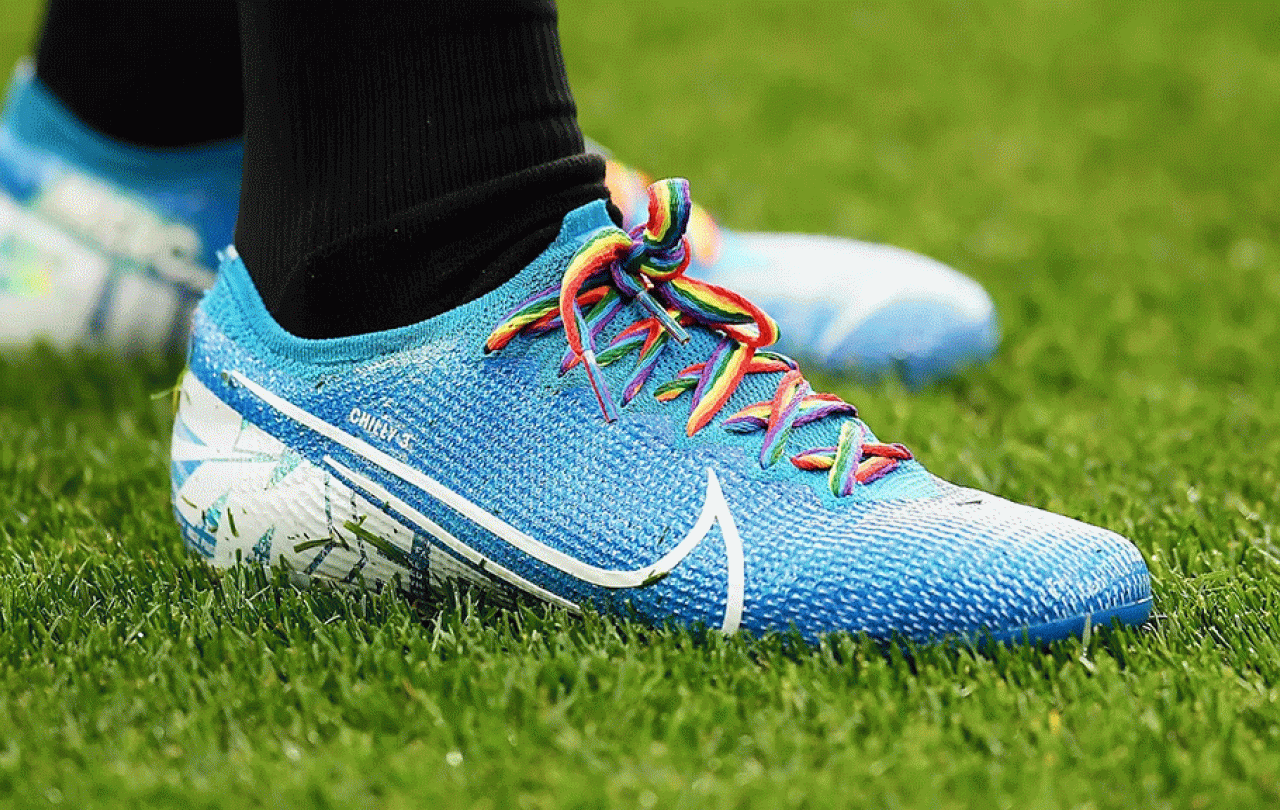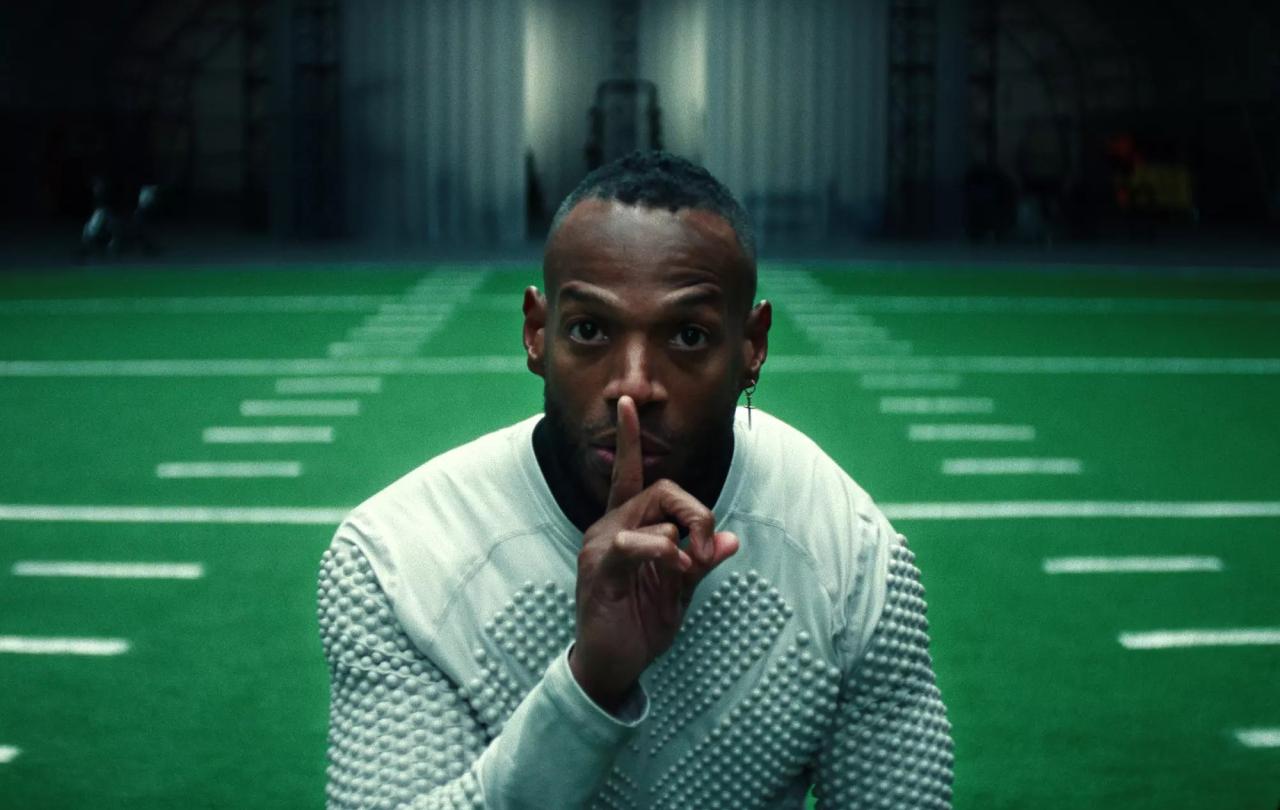
In 2013, the LGBTQ+ charity Stonewall partnered with the Premier League to launch the Rainbow Laces campaign. For certain matches, Premier League footballers are encouraged to wear rainbow colour laces and armbands when captain.
The stated aim of the campaign is to ensure “everyone feels welcome” at football matches. All the league’s clubs have committed to the campaign, although the wearing of laces and armbands is optional for players.
Recently, Ipswich Town’s captain Sam Morsy decided to wear a standard captain’s armband, rather than the rainbow-coloured version. The club later released a statement saying he made this decision due to his religious beliefs, which the club respected. Morsy again declined to wear the rainbow-coloured armband for Ipswich’s match against Crystal Palace a few days later.
Speaking of Crystal Palace, their captain – Marc Guehi – did wear the armband, but wrote “I [heart] Jesus” on it. While the FA did not punish Guehi or Palace, they did write to them to remind them that religious messaging of any kind was not permitted on kits. Subsequently, during Tuesday’s match against Ipswich, Guehi changed the message to “Jesus [heart] you.”
It says something about society’s view of Christianity that people saw Guehi’s “I [heart] Jesus” message and took it as an anti-LGBTQ+ message. The Church is doing something wrong if people can so easily equate loving Jesus with hating LGBTQ+ people.
Of course, it is undeniable that many people have been – and continue to be – discriminated against and persecuted because of their sexual orientation or gender identity in acts of violence and abuse underwritten by religious beliefs.
However, being ‘religious’ is not a straightforward predictor of someone’s views of sexual orientation. Many people who self-identity as Christian, Muslim, Jewish, or as members of any number of other faiths, would describe themselves as inclusive and affirming of people of all sexual orientations and gender identities.
So, why are we talking about what colour armband grown men are wearing – or not wearing – when playing football?
The issue emerges because of the use of these armbands as symbols. Symbols are inherently empty of content; they only mean something when individuals or groups assign meanings to those symbols.
This is how the meaning ascribed to symbols changes over time, as they are used in different ways and received by different social groups. For centuries, the swastika was a wholly positive religious symbol in a variety of traditions across Hinduism, Buddhism, and Jainism, often carrying connotations of prosperity and good fortune.
You would be hard pressed to find someone who ascribes this meaning to the swastika from the 1930s onwards.
Symbols are powerful, but they are so precisely because they are devoid of intrinsic meaning. Humans are unsurpassed in their ability to fall out with one another. By centring campaigns and movements around symbols, people who would ordinarily be at each other’s throats are more easily able to stand alongside one another, ‘filling’ the symbol with whatever meaning sits most comfortably with them. They are meaningless banners under which odd bedfellows might bury the hatchet in service of greater aims.
But symbols can be a double-edged sword. Their lack of concrete meaning also allows different people to find competing meanings in the same symbol. Part of the reason for the dispute over the wearing of rainbow armbands, then, is due to different groups ascribing different meanings to the same symbol.
For some footballers, being encouraged to wear rainbow armbands might be received as being encouraged to wear a symbol encoded with meanings that undermine their entire system of religious belief.
And, for these people, religious belief is not an optional extra; it is their most fundamental identity and it is the framework within their entire existence and experience is rationalised and given meaning. To undermine a framework like this is no trivial matter.
But for people who identity as LGBTQ+, seeing their team’s captain wearing a rainbow armband might ‘mean’ something as simple as: “If you identify as LGBTQ+, you are welcome here at this football match, and we want you to feel safe here.”
It’s not hard to see how a refusal to wear an armband might be received as a slap in the face for people who ascribe that meaning to the armband; it’s tantamount to a refusal to acknowledge their existence. While it unfortunately does need repeating, the mere existence of LGBTQ+ people is not a threat to religious belief.
The malleability of the symbol means that both individuals – and by extension, the groups to which they belong – are left feeling as though there is no space for them in football. Or, at the very least, that they have to compromise on being who they are if they are to be afforded a place within the football community.
The desire for beige corporate gestures designed to be cheap, easy and unoffensive wins often reduces the scope for conversation and dialogue.
And this is the problem with trying to navigate complex issues such as societal inequality through tokenistic gestures and symbols: the same power that enables symbols to unite people can also divide people. The same vagueness that makes symbols so powerful also minimises the possibility for genuine and nuanced conversation.
This is not to say we should do away with such gestures altogether. The comedian Matt Lucas took to X to recount something of his experiences as an Arsenal fan. Twice this season – just this season – Lucas has been abused at football matches because of his sexuality.
I’ve never been abused at a football match because of my sexuality, gender, race, ethnicity, or, for that matter, my religious beliefs. I don’t think it’s up to me to decide what does and does not make LGBTQ+ supporters feel welcome and safe at the match. If symbols such as rainbow armbands make these supporters feel safer at football matches – and again, it’s not up to me to decide if they do or they don’t – then I can only imagine that is an unqualified positive.
That being said, if football is going to have meaningful and fruitful conversations about questions of faith, religion, and sexuality, then I think it’s clear that tokenistic use of symbols is simply not equipped for that. Like so much contemporary public discourse, the desire for beige corporate gestures designed to be cheap, easy and unoffensive wins often reduces the scope for conversation and dialogue.
Symbols lie at the heart of human experience. The fallout from the actions of Sam Morsy and Marc Guehi demonstrates the significance of symbols to human life, but also of the importance of understanding the meaning of our cultural symbols, both as we understand them, and as they are understood by others.
Too often we focus on what symbols mean to us, at the expense of what they might mean to others. When we assume that symbols carry a shared, fixed meaning for all, we deny ourselves the opportunity to listen and learn from the ways in which we experience our shared cultural symbols.
And if there is one thing we really could do with more of, it is listening.
Support Seen & Unseen
"If you were able to support us on Seen & Unseen with a regular gift of £5 or £10 a week, that would be a great encouragement for us and enable us to continue to produce the content we offer."
Graham Tomlin, Editor-in-Chief





